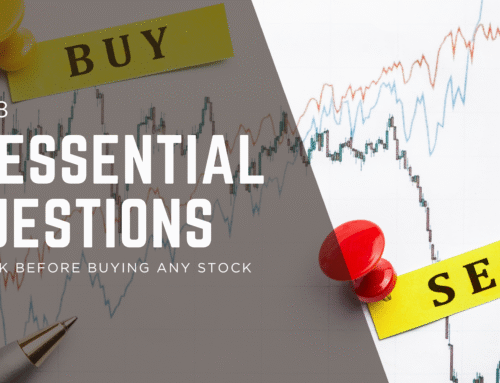
Continuing our mutual fund education series, we now explore the practical process of selecting funds that match your investment goals and the comprehensive advantages and disadvantages of mutual fund investing. Making informed fund choices requires understanding both the opportunities and limitations of professional money management.
🎯 Pro Tip
Successful mutual fund investing starts with matching fund strategies to your personal investment goals, risk tolerance, and time horizon. Never invest in funds whose strategies you don’t fully understand.
How to Select the Right Mutual Fund for You
Understanding Fund Strategies and Styles
The importance of aligning fund objectives with your investment personality.
🏢 Fund Strategy Spectrum
- Established Companies: Blue-chip funds focusing on large, stable corporations
- Start-up Businesses: Venture capital and small-cap funds for growth potential
- Sector-Specific: Technology, healthcare, or energy funds targeting specific industries
- Geographic Focus: Domestic, international, or emerging market funds
The Knowledge Requirement
Why understanding your investments is non-negotiable.
- Biotech Example: Don’t invest in biotech funds without understanding the industry
- Strategy Comprehension: Must understand the fund’s investment approach and risks
- Personal Alignment: Choose funds matching your knowledge and comfort level
- Avoid Blind Investing: Never buy funds based solely on past performance
Comprehensive Pros and Cons Analysis
The Advantages of Mutual Fund Investing
1. Diversification and Risk Reduction
How mutual funds spread and manage investment risk.
🛡️ Diversification Benefits
- Reduced Single-Stock Risk: Not dependent on individual company performance
- Bankruptcy Protection: One company failure has minimal portfolio impact
- Broad Exposure: Multiple holdings across various sectors and companies
- Automatic Rebalancing: Professional management maintains target allocations
2. Professional Management Expertise
The value of expert portfolio management.
- Research Delegation: No need to analyze thousands of individual companies
- Sector Specialization: Managers develop deep industry expertise
- Full-Time Focus: Dedicated professionals monitoring markets daily
- Impossible Expertise: Individual investors can’t master all investment areas
The Disadvantages and Challenges
1. Ongoing Research Requirements
The continuous due diligence needed for fund investing.
🔍 Continuous Monitoring Needs
- Time Commitment: Significant research required to select and monitor funds
- Manager Changes: Performance can shift with management turnover
- Sector vs. Management: Good sectors can be undermined by poor management
- Dynamic Portfolios: Fund holdings change regularly without investor input
2. Transparency and Control Limitations
The challenges of indirect stock ownership.
- Delayed Reporting: Prospectuses may not reflect current holdings
- Limited Control: No input on individual stock selection or timing
- Manager Dependency: Performance tied to fund manager skill and strategy
- Unknown Holdings: Investors rely on manager expertise for specific choices
3. Performance Uncertainty
The limitations of past performance as a guide.
📊 Performance Reality Check
- Standard Warning: “Past performance doesn’t guarantee future results”
- Limited Data: Past performance is the only concrete information available
- Reversion Risk: Top performers often become future underperformers
- Manager Impact: Performance can change dramatically with management turnover
4. Cost and Fee Considerations
The impact of management fees on returns.
- Guaranteed Costs: Annual management fees always exceed individual stock costs
- Hidden Fees: Multiple fee types buried in prospectus documentation
- Performance Drag: Fees reduce net returns regardless of fund performance
- Compounding Impact: Small annual fees create significant long-term costs
Practical Fund Selection Framework
Define Your Investment Goals
Matching fund types to specific financial objectives.
🎯 Goal-Based Fund Selection
- Long-Term Retirement: Stock funds for growth over decades
- Short-Term Savings: Money market funds for capital preservation
- Education Funding: Balanced funds with moderate growth and risk
- Income Generation: Bond or dividend funds for regular cash flow
Risk Tolerance Assessment
Aligning fund volatility with your comfort level.
- Aggressive Investors: Small-cap, sector, or emerging market funds
- Moderate Investors: Balanced or large-cap growth funds
- Conservative Investors: Bond, dividend, or money market funds
- Time Horizon Consideration: Longer timelines allow more risk tolerance
Advanced Selection Considerations
Manager Due Diligence
Evaluating the people behind the fund performance.
👨💼 Manager Evaluation Checklist
- Track record length and consistency across market cycles
- Investment philosophy clarity and consistency
- Experience in current fund strategy and sector
- Team stability and depth beyond the named manager
- Communication transparency and frequency
Fee Structure Analysis
Understanding and comparing fund costs.
- Expense Ratio: Annual management and operational fees
- Load Fees: Sales commissions (front-end, back-end, or level)
- Transaction Costs: Hidden trading and brokerage fees
- 12b-1 Fees: Marketing and distribution expenses
Implementation Strategy
Building a Fund Portfolio
Creating a diversified mutual fund investment approach.
📊 Portfolio Construction Approach
- Core-Satellite Strategy: Broad market funds as core, specialized funds as satellites
- Style Diversification: Mix of growth, value, and blend funds
- Cap Size Balance: Large-cap, mid-cap, and small-cap exposure
- Geographic Allocation: Domestic and international fund combination
Ongoing Monitoring Process
Maintaining and adjusting your fund investments.
- Regular performance reviews against appropriate benchmarks
- Monitoring manager changes and strategy shifts
- Rebalancing portfolio to maintain target allocations
- Evaluating fee changes and cost efficiency
- Assessing tax efficiency and distribution implications
Common Selection Mistakes to Avoid
Performance Chasing Errors
Dangers of buying based solely on past returns.
🚫 Performance Pitfalls
- Buying last year’s top performers without understanding strategy
- Ignoring the impact of hot sectors on short-term performance
- Overlooking consistent moderate performers for volatile high-flyers
- Failing to consider how market cycles affect different fund strategies
Cost and Fee Mistakes
Errors in evaluating fund expense impacts.
- Choosing low fees over quality management and strategy
- Ignoring the long-term compounding impact of small fee differences
- Overlooking hidden fees beyond the stated expense ratio
- Failing to negotiate share classes for larger investments
Balanced Decision Framework
Weighing Pros and Cons
Creating your personal mutual fund evaluation scorecard.
⚖️ Evaluation Balance Sheet
- Pros Priority: Diversification, professional management, accessibility
- Cons Mitigation: Research time, manager risk, costs, performance uncertainty
- Personal Fit: Alignment with knowledge, goals, and risk tolerance
- Alternative Consideration: ETFs, individual stocks, or professional advisors
Conclusion: Informed Mutual Fund Investing
The Selective Approach
Successful mutual fund investing requires careful selection, ongoing monitoring, and realistic expectations about both the benefits and limitations of professional money management.
Your Fund Selection Journey
By understanding fund strategies, honestly assessing your goals and risk tolerance, and conducting thorough due diligence, you can build a mutual fund portfolio that provides the diversification and professional management you need while minimizing the drawbacks of costs and manager dependency.
🎯 Final Selection Wisdom
The best mutual fund for you isn’t necessarily the one with the highest past returns, but the one whose strategy you understand, whose manager you trust, and whose role in your portfolio aligns with your specific financial goals and risk tolerance.
“A wealthy person is simply someone who has learned how to make money when they’re not working.” – Robert Kiyosaki







